South Carolina  SC Facts & Firsts
SC Facts & Firsts  SC State Symbols, Nicknames
SC State Symbols, Nicknames
FEATURED SC State Symbols
 Feature Your SC State Symbol Resource Here
Feature Your SC State Symbol Resource Here
SC State and Local Nicknames
South Carolina is widely known as the Palmetto State in honor of
our state tree, the Palmetto. However, we were once known as the Iodine State instead. Our state has many other colorful nicknames as well, including many for SC cities and towns. Finally, SCIWAY publishes a wonderful guide to
SC Pronunciations that you won't want to miss.
SC State Symbols
South Carolina has many state symbols of cultural and historical relevance. Most have only recently been designated state symbols, although the state seal was first used in 1777. The state flag wasn't adopted for almost another century, when South Carolina seceded from the Union and desired a new flag. The 1900s saw the introduction of many new state symbols such as South Carolina's state tree in 1939, the state animal in 1972, and the state fruit in 1984.
SC Amphibian – Spotted Salamander

Named the official state amphibian in 1999, following a year-long campaign by the third-grade class of Woodland Heights Elementary School in
Spartanburg.
SC Amphibian, Spotted Salamander
SC Animal – White Tailed Deer

Deer can be seen bounding through South Carolina's woods year-round. They are plentiful in our state, and in 1972 the legislature named them the official state animal.
SC Animal, White Tailed Deer
SC Beverage – Milk

Act 360 of the 1984 General Assembly stated that dairy farmers could be found in all but seven counties in South Carolina, making it a multi-million dollar industry for our state. These farms, located mainly in the Midlands and Upstate, raise goats and cows for milk production.
SC Beverage, Milk
SC Bird – Carolina Wren
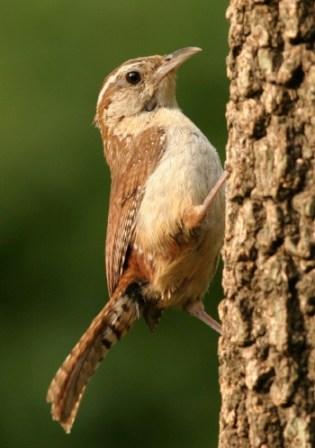
Known for nesting in unusual places such as bags, boxes, flower pots, and even shoes, the Carolina Wren is beloved by many in our state. Interestingly, our state bird was the Mockingbird from 1939 until 1948.
SC Bird, Carolina Wren
SC Butterfly – Eastern Tiger Swallowtail

Named for the long portion of their hind wings which resemble a swallow's tail feathers, each of the forewings of the Eastern Tiger Swallowtail has four black stripes resembling a tiger. Butterflies are most prevalent in South Carolina during the autumn.
SC Butterfly, Eastern Tiger Swallowtail
SC Dance – The Shag
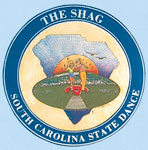
The Carolina Shag was designated the official state dance of SC in 1984, but for more than a half-century, it has been synonymous with warm sand, cold beer, and
beach music. A form of Southern swing, it's said to have begun along the Grand Strand as early as the 1920s.
SC Dance, The Shag
SC Dog – Boykin Spaniel
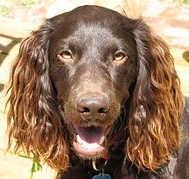
The native SC breed was first bred in the early 1900s by L. W. "Whit" Boykin. Boykin had longed for a better dog to hunt water fowl with. Boykin trained a friend's stray, spaniel type dog, "Dumpy," to be a superior hunt dog and retriever. Dumpy became the father of the Boykin Spaniel.
SC Dog, Boykin Spaniel
SC Duck – Summer Duck (Wood Duck)

Designated as the state duck in 2009, the wood duck can be found in South Carolina year-round. These ducks like marshy areas and can commonly be found in wooded parts of rivers, ponds, swamps, and shallow lakes.
SC Duck, Summer Duck (Wood Duck)
SC Fish – Striped Bass (Rockfish)
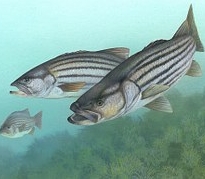
This species of bass is among the largest with many adults surpassing 20 pounds in weight. Traditionally favoring coastal rivers for their flowing water, the striped bass has adapted over the years and now thrives in lakes across the state too.
SC Fish, Striped Bass (Rockfish)
SC Flag

In 1775,
Colonel William Moultrie designed a flag based on the blue uniforms and crescent badges which decorated the caps of guards during the
Revolutionary War. Over the years, variations of Moultrie's flag flew in the state on which the
palmetto tree had been added.
SC Flag
SC Flower – Yellow Jessamine

Yellow jessamine, pronounced "JES-uh-min" or "jaz'min," became our official state flower in 1924. Because it is native to our state, it is also called Carolina jessamine. Jessamine is an evergreen vine that climbs trees, fences, and latticework. It blooms in late winter or early spring.
SC Flower, Yellow Jessamine
SC Folk Art & Craft Center – SC Artisans Center

Located in the heart of downtown
Walterboro, the center proudly showcases the work of over 270 South Carolina artisans. The medium of craft and art styles is vast, spanning from the traditional to modern.
SC Folk Art & Craft Center, SC Artisans Center
SC Folk Dance – The Square Dance
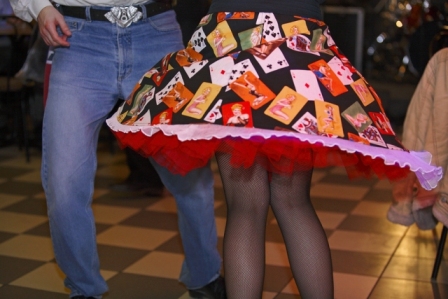
Sixteenth and seventeenth-century settlers came to America from across Western Europe bringing with them the customs and heritage of their homeland. Eventually, French quadrilles, Irish jigs, and English reels were interwoven and the square dance was born.
SC Folk Dance, The Square Dance
SC Food – Grits (unofficial)

Grits are considered a staple in South Carolina, a comfort food, and a symbol of our unique culinary traditions. The color of grits depends on the color of corn used – yellow or white.
SC Food, Grits
SC Fossil – Columbian Mammoth
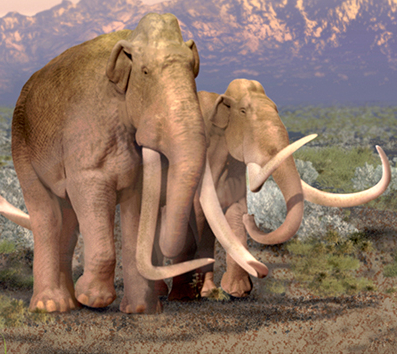
The bill was signed in 2014 after the efforts of a third-grader from
Lake City. In 1725, fossilized mammoth teeth were discovered in a SC swamp.
SC Fossil, Columbian Mammoth
SC Fruit – Peach

It wasn't until the 1850s that peaches were commercially in our state. Then, in the 1920s, their popularity blossomed as cotton farmers stymied by the boll weevil looked for new crops. South Carolina now leads all southern states in peach production – including Georgia!
SC Fruit, Peach
SC Grass – Indian Grass
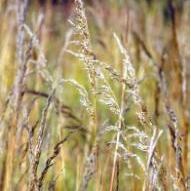
Typically 3-5 feet in height, this warm weather plant can grow in a variety of soil types. Its adaptivity has lead to the Indian Grass to be declared a weed in some areas of the country.
SC Grass, Indian Grass
SC Gemstone – Amethyst

A variety of quartz, amethyst became our official state gemstone in 1969. This designation followed the discovery of several world-class amethysts at the Ellis-Jones Mine near
Due West. Samples of these amethysts are on display at the Smithsonian Museum of Natural History.
SC Gemstone, Amethyst
SC Handcraft – Sweetgrass Basket
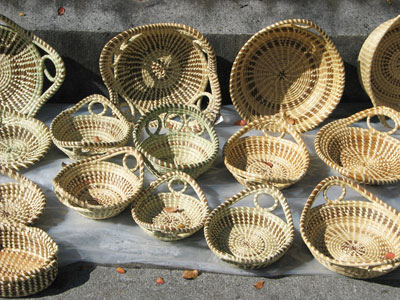
Woven with a native plant, sweetgrass baskets are valued for their complexity, their beauty, and their utility. They also serve to remind us of the rich African heritage brought to this country by slaves.
SC Handcraft, Sweetgrass Basket
SC Horse – Marsh Tacky
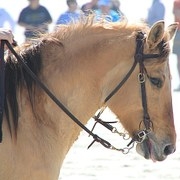
Tracing its heritage back to stock that arrived with Spanish explorers, the Marsh Tacky has been in our state for over 400 years. Once thought extinct, DNA testing in 2005 proved the breed was still alive in coastal South Carolina.
SC Horse, Marsh Tacky
SC Hospitality Beverage – Tea
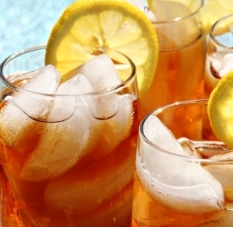
Tea was first brought to North America in 1799 by French botanist Francois Andre Michaux, who planted it near
Charleston at Middleton Barony (now called
Middleton Place). Today, "America's Only Tea Garden" is located on
Wadmalaw Island at the
Charleston Tea Plantation.
SC Hospitality Beverage, Tea
SC Insect – Carolina Mantid
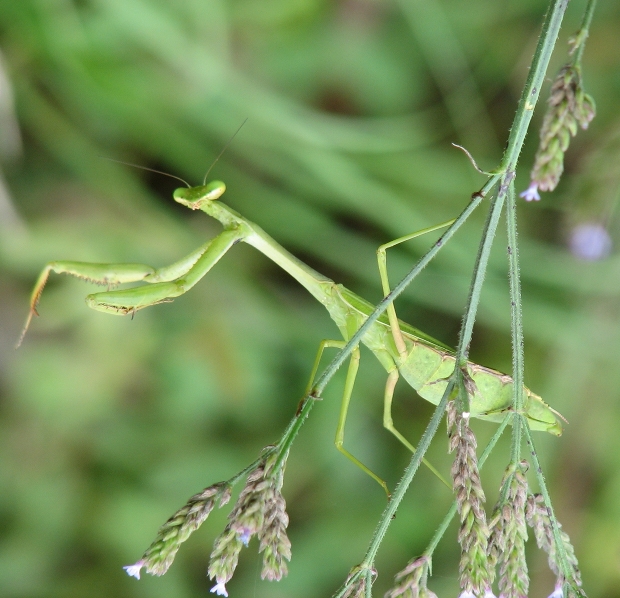
Ranging in color from light green to brown-gray, the Carolina Mantid can easily blend into its environment. With eggs hatching in the spring, the insects are mature by the end of summer and are most commonly seen from then through early fall.
SC Insect, Carolina Mantid
SC Mace – Mace of the House of Representatives
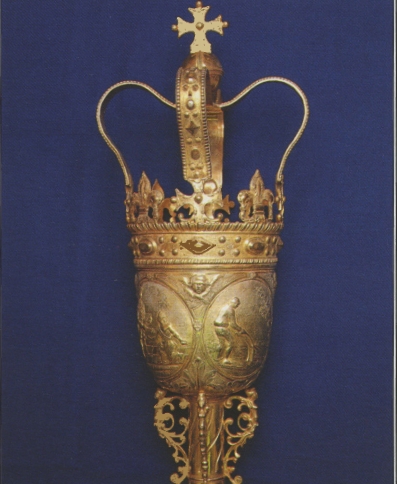
Made for the Commons House of Assembly in 1756, the SC mace is the oldest, continuously used one by any US state legislature. At almost 4' long and weighing over 10 pounds, the mace stands for the authority of the South Carolina House of Representatives.
SC Mace, Mace of the House of Representatives
SC Marine Mammal – Bottlenosed Dolphin
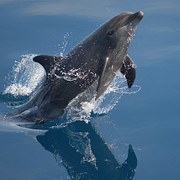
Bottlenosed dolphins can be found worldwide in temperate ocean waters and coastal areas. In SC, these mammals can be seen offshore as well as in bays and estuaries. Typically 8'-9' in length, the bottlenose dolphin is protected under the Marine Mammal Protection Act.
SC Marine Mammal, Bottlenosed Dolphin
SC Migratory Marine Mammal – Northern Right Whale
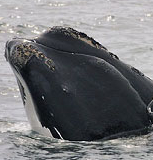
This critically, endangered species is found off the SC shore late winter through spring. At a population estimated at just 450, the Right Whale Sighting Advisory System has been developed to reduce collisions with ships. If you spot a whale, please report it
here.
SC Migratory Marine Mammal, Northern Right Whale
SC Mottos

South Carolina has two state mottos. Both were first used in 1777 when the state seal had two sides. On the front of this seal was, "Animis Opibusque Parati," which is Latin for "Prepared in Mind and Resources." And the back, "Dum Spiro Spero," which is Latin for "While I Breathe, I Hope."
SC Mottos
SC Music – The Spiritual
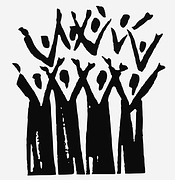
Although not officially designated until 1999 as the state music of South Carolina, the Spiritual has been a part of the state's culture for generations. Originating in the slave era, these songs have strong religious foundations and roots that stretch to African ancestors.
SC Music, The Spiritual
SC Opera – Porgy and Bess
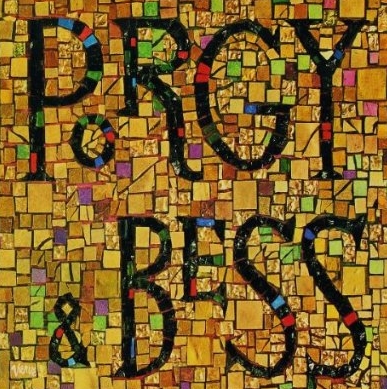 Charleston
Charleston native DuBose Heyward wrote the novel
"Porgy"
in 1925 about the fictional Catfish Row and its
Gullah residents. Famed composer George Gershwin immediately contacted Heyward after reading it to form a collaboration to develop a folk opera based on the book.
SC Opera, Porgy and Bess
SC Pledge
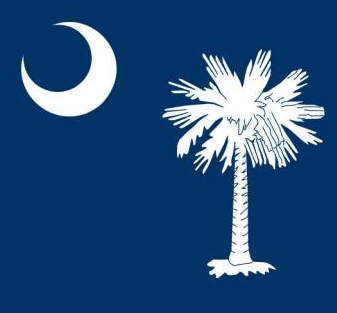
Penned by Mrs. John R. Carson in 1950, "I salute the flag of South Carolina and pledge to the Palmetto State love, loyalty and faith." was officially designated the state pledge in 1966.
SC Pledge
SC Poet Laureate – Marjory Wentworth
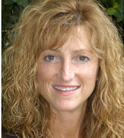
Selected by the state's governor, Marjory Wentworth served from 2003 until her resignation in October 2020. Previous Poet Laureates were Archibald Rutledge, 1934-1973; Helen von Kolnitz Hyer, 1974-1983; Ennis Rees, 1984-1985; Grace Beacham Freeman, 1985-1986; Bennie Lee Sinclair, 1986-2000.
SC Poet Laureate, Marjory Wentworth
SC Popular Music – Beach Music

Beach music originated around the time of the second World War, and has come to be regarded as synonymous with the official state dance, the
Carolina Shag. At first this music could only be found locally on the jukeboxes of South Carolina's beachside "jump-joints" and saloons.
SC Popular Music, Beach Music
SC Reptile – Loggerhead Turtle

Named for their large, log-shaped heads, loggerhead turtles are the most common species of saltwater turtle in the United States but have been on the threatened species list since the late 1970s. Nests are made on beaches during mid-to-late summer.
SC Reptile, Loggerhead Turtle
SC State Seal

Originally dual sided, the state seal has included both mottos since its inception in 1777. The two sides were combined into one when it proved difficult to include impressions of both in wax for documents. The seal has the mottos, a
palmetto tree and Roman goddess Spes.
SC State Seal
SC Shell – Lettered Olive
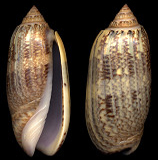
Named for the shells' brown markings, which somewhat resemble letters of the alphabet. Native Americans made necklaces using the shells. This tradition continued into the early 1900s when commercially made "panama shell" necklaces were popular with tourists.
SC Shell, Lettered Olive
SC Snack Food – Boiled Peanuts
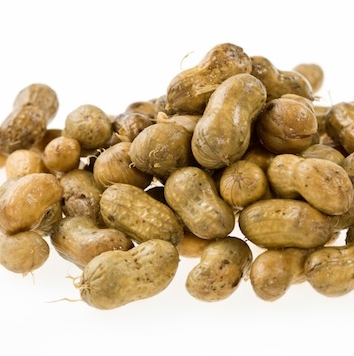
Peanuts, goober peas, groundnuts – no matter what you call them, most South Carolinians agree they taste better boiled! In fact, they are such an important part of South Carolina culture, they were designated the state's official state snack in 2006.
SC Snack Food, Boiled Peanuts
SC Songs – Carolina and South Carolina on My Mind

Why have just one state song when two would be even better! That is what the South Carolina General Assembly decided in 1984 when they designated
South Carolina on My Mind as an official state song. It joined
Carolina which was adopted in 1911.
SC Songs, Carolina and South Carolina on My Mind
SC Spider – Carolina Wolf Spider
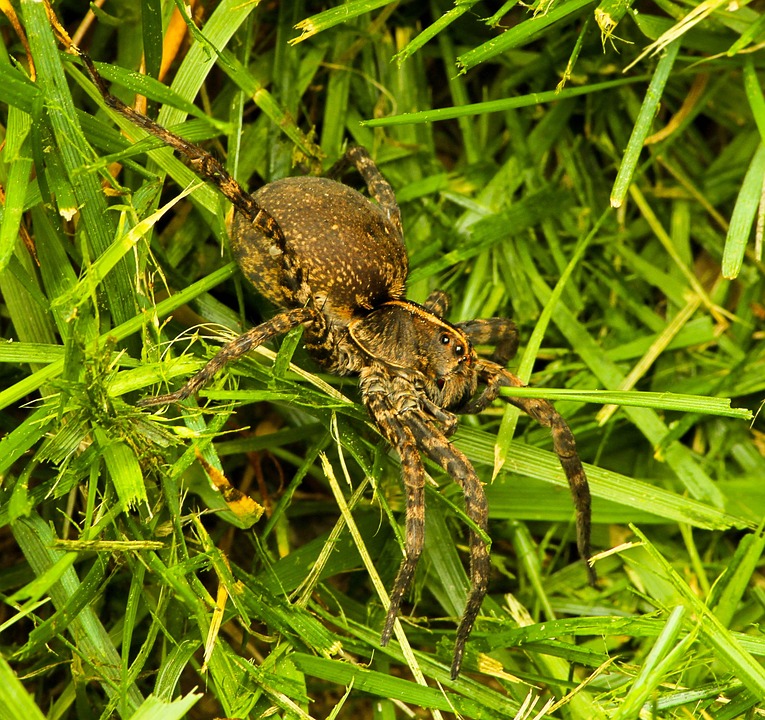
The Carolina Wolf Spider is the largest wolf spider in North America so it is no wonder why it is also known as the Giant Carolina Wolf Spider. Found throughout the US, the Carolina Wolf Spider is 3-4 inches long and often mistaken for the much more dangerous brown recluse.
SC Spider, Carolina Wolf Spider
SC Stone – Blue Granite
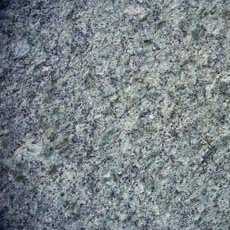
Blue Granite is unique to the Midlands and the Piedmont region of the state. When the bill designating this symbol was passed in 1969, legislators declared that it had been used "to beautify all areas of South Carolina." It was even used in the 1908 construction of the SC Statehouse.
SC Stone, Blue Granite
SC Sword – Sword of the Senate

Records show that SC has had an official state sword since 1704 when a decree for the purchase of a silver sword was issued. This sword was stolen in 1941 and is still listed in the FBI's
National Stolen Art File. The current sword, engraved with the state flower and seal, was a gift in 1951.
SC Sword, Sword of the Senate
SC Tartan – Carolina Tartan
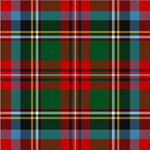
In 1980 Scot tartan historian Peter MacDonald was commissioned to design the tartan. He based the design on the Royal Stewart tartan, which is believed to have been used on a ceremonial coat of King Charles II. The Carolinas were created by a 1663 grant issued by the king.
SC Tartan, Carolina Tartan
SC Tree – Sabal Palmetto
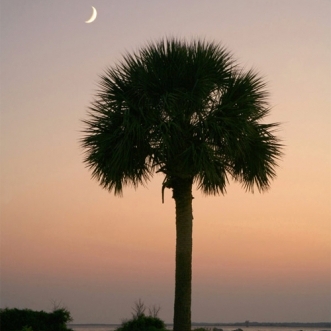
The trunks of palmetto trees (Sabal palmetto) are not comprised of wood but a fibrous material that allows the tree to bend in the strong winds common to the South Carolina coast. They also tolerate salt spray and sandy soil and can even withstand ice and snow.
SC Tree, Sabal Palmetto
SC Vegetable – Collard Greens
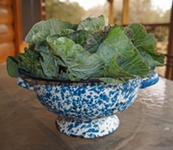
The green, leafy plant became the state vegetable in 2011 when a
Lexington third-grader wrote her state senator. This cool-season crop grows across the state and should be planted early enough in the spring so that it is ready for harvest before temperatures become too hot.
SC Vegetable, Collard Greens
SC Waltz – The Richardson Waltz

Believe it or not, South Carolina's State Waltz is a song – not a dance. The music, evolved over a period of perhaps 300 years or more, has been passed down by ear through generations of the Richardson family. The waltz is a traditional European musical form.
SC Waltz, The Richardson Waltz
SC Wildflower – Goldenrod

Goldenrod is a common sight in South Carolina, growing naturally and profusely in fields, on roadsides, and along fence lines. Its bright yellow blooms appear in the fall. Tall Goldenrod became the state wildflower in 2003 when championed by garden clubs.
SC Wildflower, Goldenrod
SC Wild Game Bird – Wild Turkey

The Wild Turkey is one of only two birds native to North America to have been domesticated. Wild Turkeys are very good fliers. Even though they fly relatively close to the ground and only for short distances, they can reach speeds of up to 50 miles per hour!
SC Wild Game Bird, Wild Turkey
More About SC State Symbols
More about symbols, emblems - official state plants, animals, gems, foods and drinks, music and dances, and more
 Named the official state amphibian in 1999, following a year-long campaign by the third-grade class of Woodland Heights Elementary School in Spartanburg.
Named the official state amphibian in 1999, following a year-long campaign by the third-grade class of Woodland Heights Elementary School in Spartanburg. Deer can be seen bounding through South Carolina's woods year-round. They are plentiful in our state, and in 1972 the legislature named them the official state animal.
Deer can be seen bounding through South Carolina's woods year-round. They are plentiful in our state, and in 1972 the legislature named them the official state animal. Act 360 of the 1984 General Assembly stated that dairy farmers could be found in all but seven counties in South Carolina, making it a multi-million dollar industry for our state. These farms, located mainly in the Midlands and Upstate, raise goats and cows for milk production.
Act 360 of the 1984 General Assembly stated that dairy farmers could be found in all but seven counties in South Carolina, making it a multi-million dollar industry for our state. These farms, located mainly in the Midlands and Upstate, raise goats and cows for milk production. Known for nesting in unusual places such as bags, boxes, flower pots, and even shoes, the Carolina Wren is beloved by many in our state. Interestingly, our state bird was the Mockingbird from 1939 until 1948.
Known for nesting in unusual places such as bags, boxes, flower pots, and even shoes, the Carolina Wren is beloved by many in our state. Interestingly, our state bird was the Mockingbird from 1939 until 1948. Named for the long portion of their hind wings which resemble a swallow's tail feathers, each of the forewings of the Eastern Tiger Swallowtail has four black stripes resembling a tiger. Butterflies are most prevalent in South Carolina during the autumn.
Named for the long portion of their hind wings which resemble a swallow's tail feathers, each of the forewings of the Eastern Tiger Swallowtail has four black stripes resembling a tiger. Butterflies are most prevalent in South Carolina during the autumn. The Carolina Shag was designated the official state dance of SC in 1984, but for more than a half-century, it has been synonymous with warm sand, cold beer, and beach music. A form of Southern swing, it's said to have begun along the Grand Strand as early as the 1920s.
The Carolina Shag was designated the official state dance of SC in 1984, but for more than a half-century, it has been synonymous with warm sand, cold beer, and beach music. A form of Southern swing, it's said to have begun along the Grand Strand as early as the 1920s. The native SC breed was first bred in the early 1900s by L. W. "Whit" Boykin. Boykin had longed for a better dog to hunt water fowl with. Boykin trained a friend's stray, spaniel type dog, "Dumpy," to be a superior hunt dog and retriever. Dumpy became the father of the Boykin Spaniel.
The native SC breed was first bred in the early 1900s by L. W. "Whit" Boykin. Boykin had longed for a better dog to hunt water fowl with. Boykin trained a friend's stray, spaniel type dog, "Dumpy," to be a superior hunt dog and retriever. Dumpy became the father of the Boykin Spaniel. Designated as the state duck in 2009, the wood duck can be found in South Carolina year-round. These ducks like marshy areas and can commonly be found in wooded parts of rivers, ponds, swamps, and shallow lakes.
Designated as the state duck in 2009, the wood duck can be found in South Carolina year-round. These ducks like marshy areas and can commonly be found in wooded parts of rivers, ponds, swamps, and shallow lakes. This species of bass is among the largest with many adults surpassing 20 pounds in weight. Traditionally favoring coastal rivers for their flowing water, the striped bass has adapted over the years and now thrives in lakes across the state too.
This species of bass is among the largest with many adults surpassing 20 pounds in weight. Traditionally favoring coastal rivers for their flowing water, the striped bass has adapted over the years and now thrives in lakes across the state too. In 1775, Colonel William Moultrie designed a flag based on the blue uniforms and crescent badges which decorated the caps of guards during the Revolutionary War. Over the years, variations of Moultrie's flag flew in the state on which the palmetto tree had been added.
In 1775, Colonel William Moultrie designed a flag based on the blue uniforms and crescent badges which decorated the caps of guards during the Revolutionary War. Over the years, variations of Moultrie's flag flew in the state on which the palmetto tree had been added. Yellow jessamine, pronounced "JES-uh-min" or "jaz'min," became our official state flower in 1924. Because it is native to our state, it is also called Carolina jessamine. Jessamine is an evergreen vine that climbs trees, fences, and latticework. It blooms in late winter or early spring.
Yellow jessamine, pronounced "JES-uh-min" or "jaz'min," became our official state flower in 1924. Because it is native to our state, it is also called Carolina jessamine. Jessamine is an evergreen vine that climbs trees, fences, and latticework. It blooms in late winter or early spring. Located in the heart of downtown Walterboro, the center proudly showcases the work of over 270 South Carolina artisans. The medium of craft and art styles is vast, spanning from the traditional to modern.
Located in the heart of downtown Walterboro, the center proudly showcases the work of over 270 South Carolina artisans. The medium of craft and art styles is vast, spanning from the traditional to modern. Sixteenth and seventeenth-century settlers came to America from across Western Europe bringing with them the customs and heritage of their homeland. Eventually, French quadrilles, Irish jigs, and English reels were interwoven and the square dance was born.
Sixteenth and seventeenth-century settlers came to America from across Western Europe bringing with them the customs and heritage of their homeland. Eventually, French quadrilles, Irish jigs, and English reels were interwoven and the square dance was born. Grits are considered a staple in South Carolina, a comfort food, and a symbol of our unique culinary traditions. The color of grits depends on the color of corn used – yellow or white.
Grits are considered a staple in South Carolina, a comfort food, and a symbol of our unique culinary traditions. The color of grits depends on the color of corn used – yellow or white. The bill was signed in 2014 after the efforts of a third-grader from Lake City. In 1725, fossilized mammoth teeth were discovered in a SC swamp.
The bill was signed in 2014 after the efforts of a third-grader from Lake City. In 1725, fossilized mammoth teeth were discovered in a SC swamp. It wasn't until the 1850s that peaches were commercially in our state. Then, in the 1920s, their popularity blossomed as cotton farmers stymied by the boll weevil looked for new crops. South Carolina now leads all southern states in peach production – including Georgia!
It wasn't until the 1850s that peaches were commercially in our state. Then, in the 1920s, their popularity blossomed as cotton farmers stymied by the boll weevil looked for new crops. South Carolina now leads all southern states in peach production – including Georgia! Typically 3-5 feet in height, this warm weather plant can grow in a variety of soil types. Its adaptivity has lead to the Indian Grass to be declared a weed in some areas of the country.
Typically 3-5 feet in height, this warm weather plant can grow in a variety of soil types. Its adaptivity has lead to the Indian Grass to be declared a weed in some areas of the country.  A variety of quartz, amethyst became our official state gemstone in 1969. This designation followed the discovery of several world-class amethysts at the Ellis-Jones Mine near Due West. Samples of these amethysts are on display at the Smithsonian Museum of Natural History.
A variety of quartz, amethyst became our official state gemstone in 1969. This designation followed the discovery of several world-class amethysts at the Ellis-Jones Mine near Due West. Samples of these amethysts are on display at the Smithsonian Museum of Natural History. Woven with a native plant, sweetgrass baskets are valued for their complexity, their beauty, and their utility. They also serve to remind us of the rich African heritage brought to this country by slaves.
Woven with a native plant, sweetgrass baskets are valued for their complexity, their beauty, and their utility. They also serve to remind us of the rich African heritage brought to this country by slaves. Tracing its heritage back to stock that arrived with Spanish explorers, the Marsh Tacky has been in our state for over 400 years. Once thought extinct, DNA testing in 2005 proved the breed was still alive in coastal South Carolina.
Tracing its heritage back to stock that arrived with Spanish explorers, the Marsh Tacky has been in our state for over 400 years. Once thought extinct, DNA testing in 2005 proved the breed was still alive in coastal South Carolina. Tea was first brought to North America in 1799 by French botanist Francois Andre Michaux, who planted it near Charleston at Middleton Barony (now called Middleton Place). Today, "America's Only Tea Garden" is located on Wadmalaw Island at the Charleston Tea Plantation.
Tea was first brought to North America in 1799 by French botanist Francois Andre Michaux, who planted it near Charleston at Middleton Barony (now called Middleton Place). Today, "America's Only Tea Garden" is located on Wadmalaw Island at the Charleston Tea Plantation. Ranging in color from light green to brown-gray, the Carolina Mantid can easily blend into its environment. With eggs hatching in the spring, the insects are mature by the end of summer and are most commonly seen from then through early fall.
Ranging in color from light green to brown-gray, the Carolina Mantid can easily blend into its environment. With eggs hatching in the spring, the insects are mature by the end of summer and are most commonly seen from then through early fall. Made for the Commons House of Assembly in 1756, the SC mace is the oldest, continuously used one by any US state legislature. At almost 4' long and weighing over 10 pounds, the mace stands for the authority of the South Carolina House of Representatives.
Made for the Commons House of Assembly in 1756, the SC mace is the oldest, continuously used one by any US state legislature. At almost 4' long and weighing over 10 pounds, the mace stands for the authority of the South Carolina House of Representatives. Bottlenosed dolphins can be found worldwide in temperate ocean waters and coastal areas. In SC, these mammals can be seen offshore as well as in bays and estuaries. Typically 8'-9' in length, the bottlenose dolphin is protected under the Marine Mammal Protection Act.
Bottlenosed dolphins can be found worldwide in temperate ocean waters and coastal areas. In SC, these mammals can be seen offshore as well as in bays and estuaries. Typically 8'-9' in length, the bottlenose dolphin is protected under the Marine Mammal Protection Act. This critically, endangered species is found off the SC shore late winter through spring. At a population estimated at just 450, the Right Whale Sighting Advisory System has been developed to reduce collisions with ships. If you spot a whale, please report it here.
This critically, endangered species is found off the SC shore late winter through spring. At a population estimated at just 450, the Right Whale Sighting Advisory System has been developed to reduce collisions with ships. If you spot a whale, please report it here. South Carolina has two state mottos. Both were first used in 1777 when the state seal had two sides. On the front of this seal was, "Animis Opibusque Parati," which is Latin for "Prepared in Mind and Resources." And the back, "Dum Spiro Spero," which is Latin for "While I Breathe, I Hope."
South Carolina has two state mottos. Both were first used in 1777 when the state seal had two sides. On the front of this seal was, "Animis Opibusque Parati," which is Latin for "Prepared in Mind and Resources." And the back, "Dum Spiro Spero," which is Latin for "While I Breathe, I Hope." Although not officially designated until 1999 as the state music of South Carolina, the Spiritual has been a part of the state's culture for generations. Originating in the slave era, these songs have strong religious foundations and roots that stretch to African ancestors.
Although not officially designated until 1999 as the state music of South Carolina, the Spiritual has been a part of the state's culture for generations. Originating in the slave era, these songs have strong religious foundations and roots that stretch to African ancestors. Charleston native DuBose Heyward wrote the novel "Porgy"
Charleston native DuBose Heyward wrote the novel "Porgy" Penned by Mrs. John R. Carson in 1950, "I salute the flag of South Carolina and pledge to the Palmetto State love, loyalty and faith." was officially designated the state pledge in 1966.
Penned by Mrs. John R. Carson in 1950, "I salute the flag of South Carolina and pledge to the Palmetto State love, loyalty and faith." was officially designated the state pledge in 1966. Selected by the state's governor, Marjory Wentworth served from 2003 until her resignation in October 2020. Previous Poet Laureates were Archibald Rutledge, 1934-1973; Helen von Kolnitz Hyer, 1974-1983; Ennis Rees, 1984-1985; Grace Beacham Freeman, 1985-1986; Bennie Lee Sinclair, 1986-2000.
Selected by the state's governor, Marjory Wentworth served from 2003 until her resignation in October 2020. Previous Poet Laureates were Archibald Rutledge, 1934-1973; Helen von Kolnitz Hyer, 1974-1983; Ennis Rees, 1984-1985; Grace Beacham Freeman, 1985-1986; Bennie Lee Sinclair, 1986-2000. Beach music originated around the time of the second World War, and has come to be regarded as synonymous with the official state dance, the Carolina Shag. At first this music could only be found locally on the jukeboxes of South Carolina's beachside "jump-joints" and saloons.
Beach music originated around the time of the second World War, and has come to be regarded as synonymous with the official state dance, the Carolina Shag. At first this music could only be found locally on the jukeboxes of South Carolina's beachside "jump-joints" and saloons. Named for their large, log-shaped heads, loggerhead turtles are the most common species of saltwater turtle in the United States but have been on the threatened species list since the late 1970s. Nests are made on beaches during mid-to-late summer.
Named for their large, log-shaped heads, loggerhead turtles are the most common species of saltwater turtle in the United States but have been on the threatened species list since the late 1970s. Nests are made on beaches during mid-to-late summer. Originally dual sided, the state seal has included both mottos since its inception in 1777. The two sides were combined into one when it proved difficult to include impressions of both in wax for documents. The seal has the mottos, a palmetto tree and Roman goddess Spes.
Originally dual sided, the state seal has included both mottos since its inception in 1777. The two sides were combined into one when it proved difficult to include impressions of both in wax for documents. The seal has the mottos, a palmetto tree and Roman goddess Spes. Named for the shells' brown markings, which somewhat resemble letters of the alphabet. Native Americans made necklaces using the shells. This tradition continued into the early 1900s when commercially made "panama shell" necklaces were popular with tourists.
Named for the shells' brown markings, which somewhat resemble letters of the alphabet. Native Americans made necklaces using the shells. This tradition continued into the early 1900s when commercially made "panama shell" necklaces were popular with tourists. Peanuts, goober peas, groundnuts – no matter what you call them, most South Carolinians agree they taste better boiled! In fact, they are such an important part of South Carolina culture, they were designated the state's official state snack in 2006.
Peanuts, goober peas, groundnuts – no matter what you call them, most South Carolinians agree they taste better boiled! In fact, they are such an important part of South Carolina culture, they were designated the state's official state snack in 2006. Why have just one state song when two would be even better! That is what the South Carolina General Assembly decided in 1984 when they designated South Carolina on My Mind as an official state song. It joined Carolina which was adopted in 1911.
Why have just one state song when two would be even better! That is what the South Carolina General Assembly decided in 1984 when they designated South Carolina on My Mind as an official state song. It joined Carolina which was adopted in 1911. The Carolina Wolf Spider is the largest wolf spider in North America so it is no wonder why it is also known as the Giant Carolina Wolf Spider. Found throughout the US, the Carolina Wolf Spider is 3-4 inches long and often mistaken for the much more dangerous brown recluse.
The Carolina Wolf Spider is the largest wolf spider in North America so it is no wonder why it is also known as the Giant Carolina Wolf Spider. Found throughout the US, the Carolina Wolf Spider is 3-4 inches long and often mistaken for the much more dangerous brown recluse. Blue Granite is unique to the Midlands and the Piedmont region of the state. When the bill designating this symbol was passed in 1969, legislators declared that it had been used "to beautify all areas of South Carolina." It was even used in the 1908 construction of the SC Statehouse.
Blue Granite is unique to the Midlands and the Piedmont region of the state. When the bill designating this symbol was passed in 1969, legislators declared that it had been used "to beautify all areas of South Carolina." It was even used in the 1908 construction of the SC Statehouse. Records show that SC has had an official state sword since 1704 when a decree for the purchase of a silver sword was issued. This sword was stolen in 1941 and is still listed in the FBI's National Stolen Art File. The current sword, engraved with the state flower and seal, was a gift in 1951.
Records show that SC has had an official state sword since 1704 when a decree for the purchase of a silver sword was issued. This sword was stolen in 1941 and is still listed in the FBI's National Stolen Art File. The current sword, engraved with the state flower and seal, was a gift in 1951. In 1980 Scot tartan historian Peter MacDonald was commissioned to design the tartan. He based the design on the Royal Stewart tartan, which is believed to have been used on a ceremonial coat of King Charles II. The Carolinas were created by a 1663 grant issued by the king.
In 1980 Scot tartan historian Peter MacDonald was commissioned to design the tartan. He based the design on the Royal Stewart tartan, which is believed to have been used on a ceremonial coat of King Charles II. The Carolinas were created by a 1663 grant issued by the king. The trunks of palmetto trees (Sabal palmetto) are not comprised of wood but a fibrous material that allows the tree to bend in the strong winds common to the South Carolina coast. They also tolerate salt spray and sandy soil and can even withstand ice and snow.
The trunks of palmetto trees (Sabal palmetto) are not comprised of wood but a fibrous material that allows the tree to bend in the strong winds common to the South Carolina coast. They also tolerate salt spray and sandy soil and can even withstand ice and snow. The green, leafy plant became the state vegetable in 2011 when a Lexington third-grader wrote her state senator. This cool-season crop grows across the state and should be planted early enough in the spring so that it is ready for harvest before temperatures become too hot.
The green, leafy plant became the state vegetable in 2011 when a Lexington third-grader wrote her state senator. This cool-season crop grows across the state and should be planted early enough in the spring so that it is ready for harvest before temperatures become too hot. Believe it or not, South Carolina's State Waltz is a song – not a dance. The music, evolved over a period of perhaps 300 years or more, has been passed down by ear through generations of the Richardson family. The waltz is a traditional European musical form.
Believe it or not, South Carolina's State Waltz is a song – not a dance. The music, evolved over a period of perhaps 300 years or more, has been passed down by ear through generations of the Richardson family. The waltz is a traditional European musical form. Goldenrod is a common sight in South Carolina, growing naturally and profusely in fields, on roadsides, and along fence lines. Its bright yellow blooms appear in the fall. Tall Goldenrod became the state wildflower in 2003 when championed by garden clubs.
Goldenrod is a common sight in South Carolina, growing naturally and profusely in fields, on roadsides, and along fence lines. Its bright yellow blooms appear in the fall. Tall Goldenrod became the state wildflower in 2003 when championed by garden clubs. The Wild Turkey is one of only two birds native to North America to have been domesticated. Wild Turkeys are very good fliers. Even though they fly relatively close to the ground and only for short distances, they can reach speeds of up to 50 miles per hour!
The Wild Turkey is one of only two birds native to North America to have been domesticated. Wild Turkeys are very good fliers. Even though they fly relatively close to the ground and only for short distances, they can reach speeds of up to 50 miles per hour!